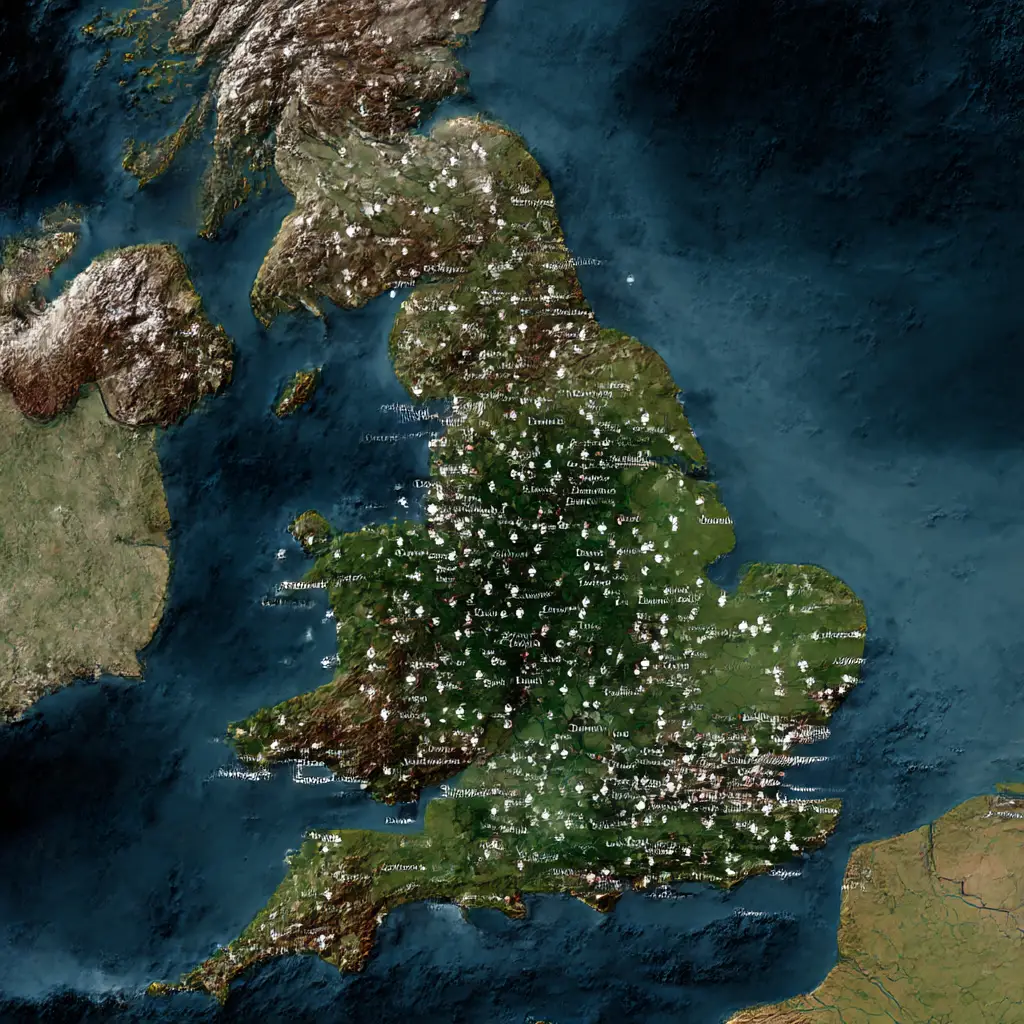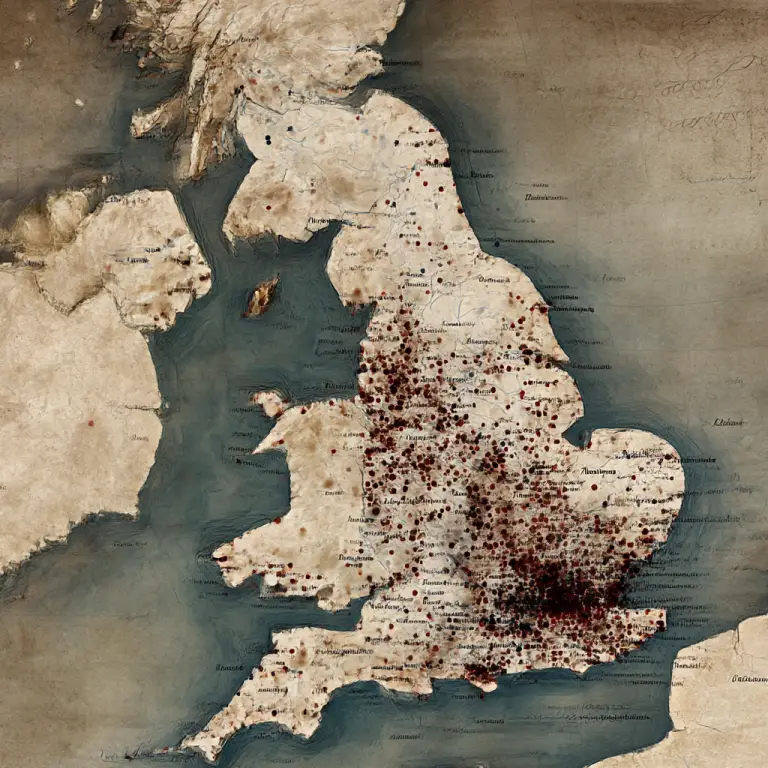Viking Place Names in England Still Used Today
The Viking influence on England is deeply embedded in the language, particularly through place names. During the Viking invasions, from the late 8th century to the 11th century, Norse settlers established towns, villages, and other settlements. Many of these places retain their original Viking names, which often reflect the culture and language of the Norse people.
Viking Influence on English Place Names
Viking place names in England are primarily associated with the Danelaw, the area of England ruled by the Norse from the 9th to the 11th century. These place names often contain Old Norse elements, particularly the suffixes -by, -thorpe, -toft, and -ness, which reflect typical Norse terms for settlements, farms, and geographic features.
Key Viking Suffixes in Place Names
-by: Meaning “town” or “village” in Old Norse. This suffix is one of the most common in Viking place names. Examples include Grimsby (Grim’s village) and Whitby (white village).
-thorpe: Meaning “village” or “outlying farm.” It is common in regions where Viking settlers established small communities. Examples include Scunthorpe and Wakefield (Waca’s field).
-toft: Referring to a homestead or site of a building. This is seen in places like Roughton (a settlement on a raised site).
-ness: Meaning a promontory or headland. Examples include Skegness (a headland where the Viking settlers landed) and Grimsness.
Notable Viking Place Names in England
Grimsby
Grimsby, located in North East Lincolnshire, derives its name from Grim, a Norse god or spirit, with the suffix -by meaning “town” or “village”. It is one of the best-known examples of Viking influence on England’s topography. Historically, Grimsby was an important fishing port and continues to be a hub for the fishing industry.
Whitby
Whitby, situated in North Yorkshire, is derived from “hwita” (white) and “by” (town). The town is famous for its connections to Saint Hilda and its role in early Christianity. Whitby was once a Viking settlement, and the name reflects the Norse influence on this coastal area.
York
York, or Jorvik in Old Norse, was the capital of the Viking kingdom in northern England. The name Jorvik came from the Old Norse word “Jórvík”, a combination of “jór” (horse) and “vík” (bay). The Vikings played a key role in York’s development as a trading hub and cultural centre.
Skegness
Skegness, located in Lincolnshire, derives its name from the Old Norse word “skegg” (beard) and “ness” (promontory). The town’s name likely referred to a headland, which resembles a beard in shape, along the coast. Skegness was heavily influenced by Viking settlers, who used the area for fishing and trade.
Scunthorpe
Scunthorpe, in North Lincolnshire, combines the Old Norse “skog” (wood) and “-thorpe” (village). It indicates a settlement that was likely built near a wooded area. Today, Scunthorpe is known for its steel industry but retains its Viking heritage in its name.
Nottingham
Nottingham’s name is derived from the Old English “Snotingaham”, but there is evidence of Norse influence after the Viking conquest of the city. It is believed that the Norse settlers renamed it “Nottingham” to incorporate “ham” (a homestead or village). The city has been home to a thriving Viking heritage centre and archaeological sites.
Influence Beyond Suffixes
In addition to the common Viking place name suffixes, there are also numerous river names, mountain names, and other geographical features in England that reflect Norse influence. For example, the River Derwent (from Old Norse “der” meaning “oak” and “vein” meaning “stream”) and Humber (from Old Norse “humer”, meaning “river mouth”).
Viking Heritage in Modern England
The Vikings left a lasting legacy on the English landscape, both in physical structures and in the language of place names. Today, towns and cities like London, Manchester, and Liverpool reflect the cultural and linguistic integration of Viking settlers with the Anglo-Saxons. Many of these names continue to be used today and are an integral part of England’s rich historical tapestry.
Conclusion
The Viking influence on England is still present in the place names we use today. From Grimsby to York, these names provide a glimpse into the past and offer a rich historical connection to the Viking era. As modern England continues to evolve, these Viking names remind us of the deep roots of Norse culture in the British Isles.
If you’re exploring the Viking legacy or simply interested in England’s historical geography, the place names are a great way to connect with the past and understand how these ancient people shaped the landscape of today.

